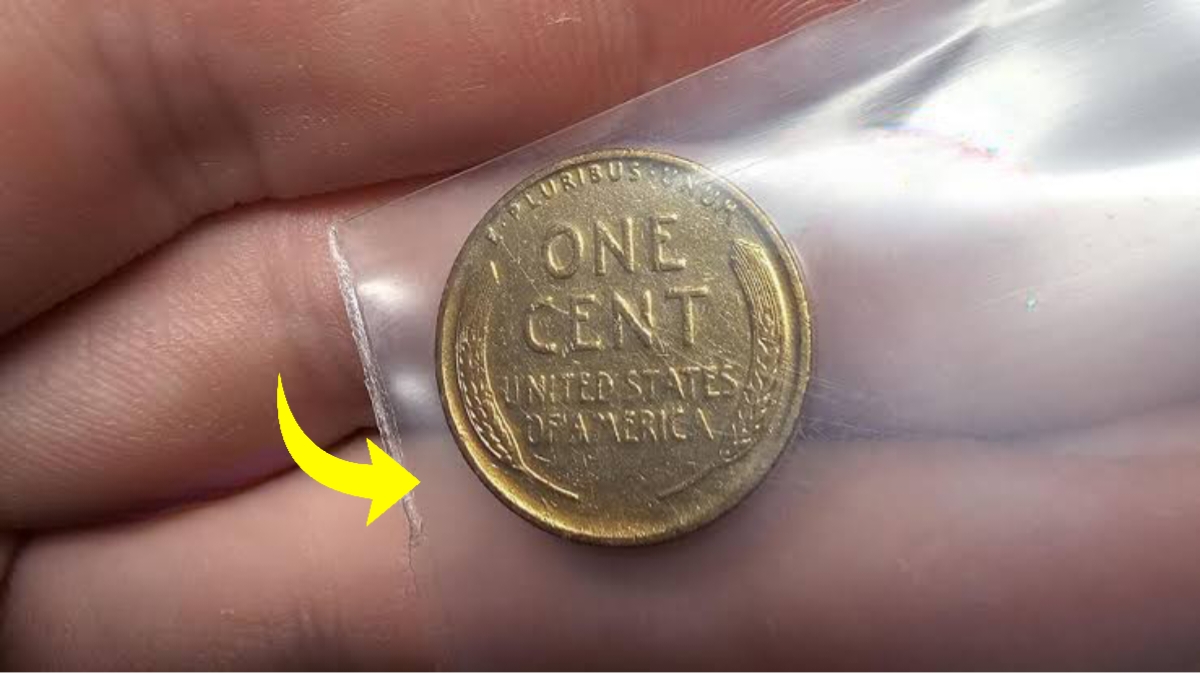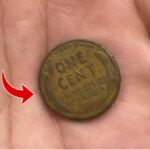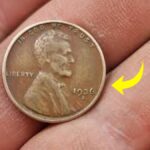Across the United States, millions of pennies change hands every day, often without a second thought. But among these common coins, there’s a rare and mysterious penny that continues to spark fascination across the coin-collecting world—the Lincoln Wheat Penny reportedly worth $4.7 million. This isn’t just another numismatic tale. It’s rooted in real minting errors, historical rarity, and the possibility that one of these valuable coins could still be floating around in everyday circulation. Most people never consider that an old coin in their pocket might be worth more than their car—or even their home. Yet the legend of this penny reminds us that treasures sometimes hide in the most mundane places. The buzz around this coin continues to grow, and collectors and curious citizens alike are scanning their change with renewed attention and hope.
A Wartime Coin with an Unintentional Twist
The Lincoln Wheat Penny was introduced in 1909 as the first U.S. coin to feature a real person—President Abraham Lincoln—on its obverse. It remained in circulation until 1958, leaving behind a long legacy of designs and minting variations. But one year in particular, 1943, gave rise to a famous error that now fuels collector excitement. Due to wartime demands for copper, the U.S. Mint produced that year’s pennies using zinc-coated steel to save copper for the war effort. However, a few leftover copper planchets—small blank discs used to make coins—accidentally remained in the minting machines. These were struck into pennies and released into circulation before the mistake was caught. Today, only a few confirmed 1943 copper pennies are known to exist, and some experts believe there may still be undiscovered examples. Their rarity, historical significance, and error-based origin make them incredibly valuable.
Why This Penny Commands a Multi-Million Dollar Price
Several factors come together to explain why this particular Lincoln Wheat Penny has an estimated value of $4.7 million. The first and most obvious is its extreme rarity—fewer than 20 examples are believed to exist worldwide. These copper pennies from 1943 should never have been made, and the few that were minted are now considered legendary in coin collecting circles. Another factor is condition. A coin that has remained in uncirculated or near-perfect shape for decades can command an exponentially higher price than a worn version. Finally, auction dynamics and collector demand play a massive role in inflating prices. Verified examples have sold at public auctions for millions, setting new records and drawing media attention each time. A coin that should not exist, that has survived the decades untouched, and that symbolizes a unique moment in U.S. history—this is the formula behind the Lincoln Wheat Penny’s astronomical valuation.
Could This Coin Really Be in Circulation Today?
It may sound improbable, but there’s still a realistic chance that one of these rare Lincoln Wheat Pennies could be sitting unnoticed in someone’s change jar, desk drawer, or pocket. Over time, coins get passed around, lost, inherited, or forgotten. Without careful inspection, a 1943 copper penny might be mistaken for an ordinary wheat penny and spent without a second thought. Because its difference is not immediately obvious, many people don’t recognize it on sight. Most 1943 pennies are silver-colored due to their steel composition. A genuine copper version will appear reddish-brown, like typical pre-1982 pennies. If someone isn’t aware of this visual cue—or doesn’t check the year—an incredibly valuable coin could continue to circulate unnoticed. The idea that one of these coins could be hiding in plain view is what keeps the hope alive and inspires so many to check their coins closely.
How to Identify the $4.7 Million Lincoln Penny
If you’re curious whether you might have one of these hidden gems, there are several easy checks to start with. First, examine the date. If your penny is from 1943 and has a reddish copper tone instead of silver-gray, that’s a good sign. Next, try the magnet test—steel pennies stick to magnets, while copper ones do not. Weighing the coin can also help: copper pennies weigh around 3.1 grams compared to 2.7 grams for steel. If your coin passes these tests, it’s important not to alter or clean it in any way, as this could damage its surface and reduce its value significantly. The best next step is to have it examined by a certified numismatist or send it to a professional grading service like PCGS or NGC. These experts can confirm authenticity and assess its condition, which ultimately determines whether it’s a pocket change penny—or a multimillion-dollar prize.
Other Valuable Pennies Worth Watching For
While the 1943 copper penny is the crown jewel, several other Lincoln Wheat Pennies also carry significant value. The 1909-S VDB penny is rare due to its limited production and the brief use of designer Victor David Brenner’s initials. The 1914-D penny from the Denver Mint is another key rarity, particularly in higher grades. The 1922 “No D” penny is a standout error coin with no visible mint mark, making it highly collectible. One of the most famous varieties is the 1955 Doubled Die penny, where the date and lettering appear noticeably doubled due to a die misalignment. All of these coins are part of the Lincoln Wheat series and can be worth hundreds or thousands of dollars depending on condition. While finding a $4.7 million coin might seem like a dream, discovering one of these lesser-known valuable pennies is a realistic possibility for the attentive collector.
Coin Collecting Is Experiencing a National Revival
In recent years, coin collecting has seen a major resurgence across the U.S., driven by viral videos, auction headlines, and renewed public interest in hidden treasures. The idea that a simple coin could change your life is now more captivating than ever. Families are sifting through old piggy banks, hobbyists are investing in coin books and magnifiers, and collectors are turning their passion into a profitable pursuit. This renewed enthusiasm is partly due to success stories of individuals stumbling upon rare coins worth thousands—sometimes millions—of dollars. Coin shows, online marketplaces, and educational YouTube channels have made the hobby more accessible and exciting. The Lincoln Wheat Penny valued at $4.7 million is not just a historical artifact; it’s a symbol of what’s possible when curiosity meets diligence. As more people join the search, the coin collecting community continues to thrive, united by the thrill of discovery and the allure of untold value.
Disclaimer
This article is for informational purposes only and does not constitute financial, investment, or professional numismatic advice. The estimated $4.7 million value associated with the 1943 copper Lincoln Wheat Penny is based on auction data, expert evaluations, and market trends. While it is theoretically possible for such coins to remain in circulation, their extreme rarity makes discovery highly unlikely. Readers interested in coin collecting should consult certified experts and use accredited grading services such as PCGS or NGC for verification and valuation. Additionally, handling or cleaning coins improperly can lead to permanent damage and reduced value. Always approach coin evaluation with care and due diligence. While the prospect of discovering a rare coin is exciting, it requires patience, knowledge, and often professional assistance to truly understand a coin’s potential worth. No guarantee is implied regarding the accuracy, future resale value, or presence of such coins in general circulation.




